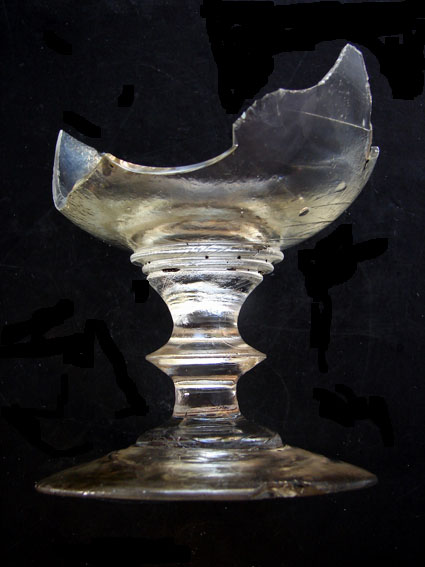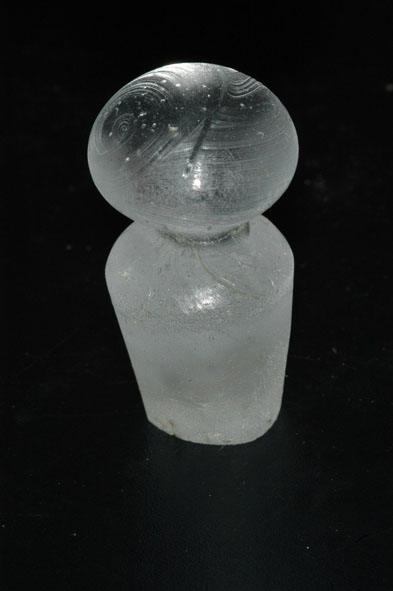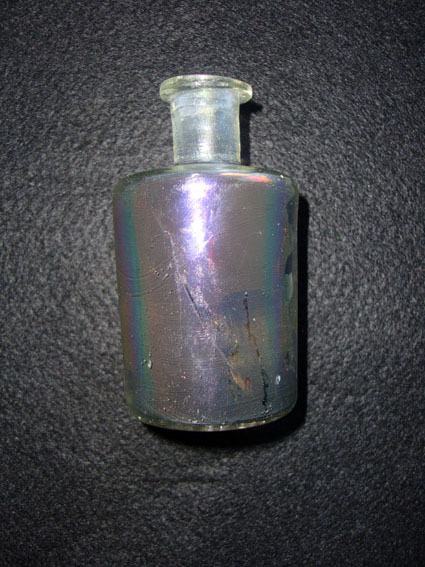Le Casimir Wreck Project
Project Overview:
This is a unique opportunity to join ADMAT’s maritime archaeological project in the historic town of Monte Cristi on the north coast of the Dominican Republic. ADMAT is working with Oficina Nacional de Patrimonio Cultural Subacuático (ONPCS) to conduct a maritime archaeological survey and excavation of this important French shipwreck.
In 1998 an initial survey was undertaken which was followed in 2000 and in October 2005. Le Casimir is the name for the shipwreck originally called the Perfume Bottle Wreck which was then shortened to the Perfume Wreck in 1999. For a number of years Dr Spooner analysed the wrecking process on a forensic basis taking all the information apart and reconstructing the event from the archaeological information. When this was completed the Team started researching in the French archives. The archival research was principally undertaken by Florence Prudhomme, and Dr. François Gendron assisted by Sylvie Quéré . After two years of hard research the story was found by the research team. The story confirmed the wrecking process calculations as set out by Dr. Spooner. The wreck is an important French merchant ship which sunk in 1829. Le Casimir was 67 ft long and had a cargo of 120 tons of porcelain, perfume, silks and wine. The central section has previously been destroyed by looters, however our Summer project will be to document the surviving front section of the lower hull, as well as to try and locate theanchors which were deployed to save the ship but failed. We will be investigating the artefact scatter pattern and the rudder remains to ascertain the original point of impact.
Applications are invited from divers, students, archaeologists and volunteers (minimum age 18) wishing to participate in the project. Only six places per week are available, so this is a unique opportunity to have maximum hands on training.
There are two different types of activity which all will undertake. One working on the wreck site underwater and the other at the base, working on the artefacts from this wreck and others. For information look through the web pages below. For dates and availability please contact Dr. Spooner on: maritime_archaeology@yahoo.co.uk


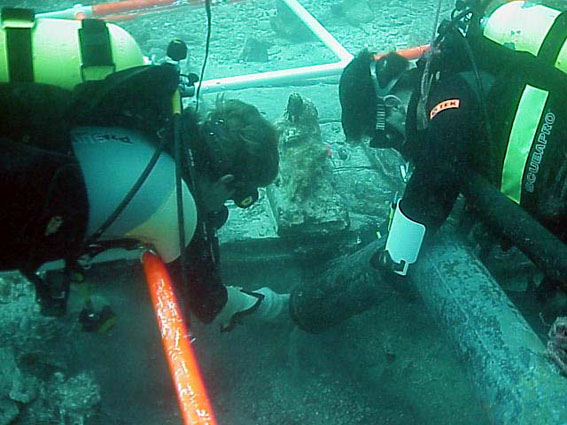
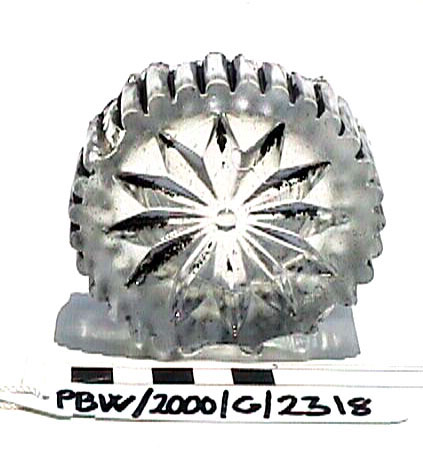




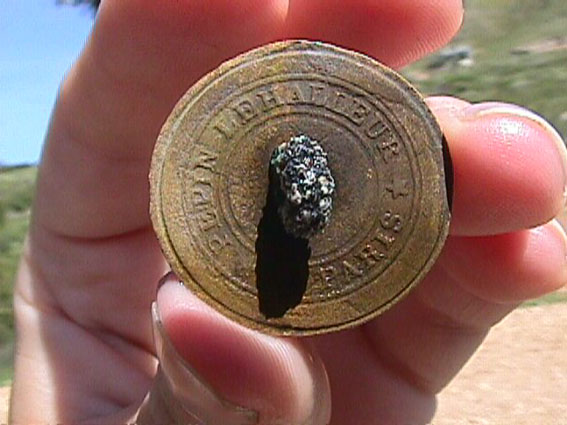



Brief History of Le Casimir Wreck:
The wreck is located approximately 7 miles to the east of Monte Cristi at the foot of a vertical inner reef in ten metres of water and about 2.5 miles from the uninhabited shore. The location of the wreck compared with the reef system is important, as the reefs hold the key to the wrecking.
Some small perfume bottles, in the shape of a scallop shell and a small barrel were found in pockets of sand at the foot of the reef. In 1998 Dr. Spooner believed that there must be more archaeological evidence at the base of the reef to the east of the ballast section. If this ship had impacted broadside to the reef, there was a chance that some artefacts would be buried in the sand pockets at the foot of the reef. Following his instincts hand fanning was undertaken in an area close to the base of the reef. This revealed a cave and a tunnel at the base of the reef. This tunnel proceeded to go upwards inside the reef for about 3.5 meters. In this cave and tunnel, 90 intact perfume bottles, of four designs were found. All were blackened and were filled with sand.
This was dubbed the “Bottle Bank” and was covered up again after the bottles were recovered and the position measured in. Further east along the base of the reef an area was located where there was sheet glass window panes stacked against the base of the reef. The majority of panes were still intact. An iron windlass was found to the seaward side of the ballast pile, although this had been moved by storms and was not in its original position and it was raised in 2006.
During the late 1999, the centre of the site was extensively looted. The looters had created large amounts of damage. Approximately 14 floors or futtocks had been forcefully removed, in a vain attempt to recover the copper sheeting from the strakes. Some artefacts were removed, because the broken ones were left on site. In addition the entrance to the “Bottle Bank” which was found in 1998 had been totally destroyed, leaving only an interesting coral piece with seven perfume bottles in the coral. Large sections of coral from the reef had been forcefully removed. During this inspection, a broken cylindrical container was found, with a copper name plaque. When conserved the diagnostic plaque revealed valuable information. It stated that the item Bœuf Bouilli had been made by J. Colin from the Rue de la Salorge in Nantes France. Research in France found that this piece had been made by Joseph Colin in his new factory which was built in 1824. In Nantes there still is a Rue de la Salorge and in this road there is the museum to Joseph Colin.
An archaeological survey on the Le Casimir started in late July 2000. The objective was to survey the area of the looted section of the wreck site, which had been vandalised the previous year.
The research questions were: what was this wreck, what was the nationality, ship’s construction and age? What was the wrecking process pattern? What could the cargo tell us about colonial life?
The survey was conducted with the Oficina Nacional de Patrimonio Cultural Subacuático (ONPCS). The first task was to set up a base line and then a 9 X 9m grid with 1 X 1m squares. Once in place, work started by removing large numbers of scattered bricks, which had been removed by the looters from the neat pile as originally found. The bricks were placed in a different location so that they could be replaced on the ballast pile at a later stage. Two water dredges were employed to remove the infill and overburden with tail end screens, which were always manned.
The area previously known as the “Bottle Bank” was investigated and confirmed as totally destroyed. The question as to how the perfume bottles got there in the first place was the subject of close examination. The belief being that the ship had smashed on to the reef broadside on the port side and broached, spilling the cargo on to the reef and in the reef gullies. Any tunnels or exposed caves would have quickly filled with artefacts only to be covered by sand and broken coral. This hypothesis would explain the reason of the original “Bottle Bank” had evolved but needed testing. The only way to test this was to find another “Bottle Bank”. By searching along the foot of the reef looking for sand “build ups” at the base of the reef, a new bottle bank was found and the hypothesis proved.
This cave contained hundreds of intact perfume bottles of different designs. Two bottles were found concreted to the upper mouth of the tunnel
In October 2005, when the ADMAT team arrived at the site to continue the archaeological survey, they noticed that looters had again attacked. The damage to the remains was extensive. The lower hull surveyed in 2000, was totally missing and had been destroyed probably by explosives. A number of broken artefacts were located as well as a few intact ones. Sections of the reef where the second bottle bank was had been eradicated as well as other sections.
The perfume bottles were the main item found giving the wreck the original name to this wreck. So far eight different designs have been found. Some of the designs of perfume bottles were elaborate and had embossed in the design “DR” which was likely the manufacturer’s initials. Dr. Gendron-Badou visited Professor Fröhlich, Director of the Centre of Infrared Spectroscopy at the Muséum National d’Histoire Naturelle in Paris. From a series of tests on the “DR” bottles it was proved that they were up to 70% lead crystal.
From the archaeological evidence and clues we put forward the following: the ship was sailing from the east to the west, probably via Puerto Plata to or Cap Haitian. It must have been sailing at night otherwise the crew would have seen the breakers on the reef. This is puzzling as only a very experienced or foolhardy captain would navigate this treacherous coastline at night so close inshore.
Looking at the reef pattern and the positioning of the remains, it is clear that the ship must have clipped the outer reef. This caused structural damage resulting in the loss of the rudder, causing loss of steerage and the ship was doomed. This would be the logical place where the anchors should have been deployed, as they have not been located on the immediate wreck site and as yet have not been found. At the same time as the loss of the rudder, a breach in the lower hull occurred due to an impact with the reef which started to spew out ballast bricks which created an artefact scatter pattern.
The ship was then sucked into the channel between the inner and middle reef. A further impact probably on the port bow, causing the cargo of bottles to spill out of hole on the amidships port side. The ship was then pushed onto the side of the reef, creating massive damage to the reef followed by a third impact which this time broke the keel of the ship and she immediately flooded and sunk.
The Archives
The archival research was principally undertaken by Florence Prudhomme, Sylvie Quéré and Dr. François Gendron. There was a memorable phone call from Dr. Gendron in Paris, to Dr. Spooner and Christine Nielsen in England, where the identification of the ship and the wrecking process was discussed and the research proved Dr. Spooner’s wrecking process with a very high degree of accuracy.
The story was found in the archives of the “Ministry of the Navy and the Colonies”, the “Historic Center of the National Archives” in Paris and the “Municipal Archives of Le Havre” with the help of the “Center of Le Havre of Historical Searches”. The Casimir’s full story was eventually found with the crew, ship’s plans, the enquiry into the sinking and the certificate of registration were found. Sylvie Quéré and Florence Prudhomme translated the French text from the court of enquiry documents from the Musée de l’Homme.
These were recorded by the tribunal, which was held to inquire into the loss of the Le Casimir by the French Prefect and Judge of Monte Cristi, Jean Paul Camarge on 30th April 1829 in Monte Cristi. There was a later inquiry made by Jean Baptiste Balardelle who was the chancellor in charge of the administration of the French Consulate at Cape Haitian. We now know that the ship’s Captain, crew and passengers at the time of sinking were:
Crew of Le Casimir
Captain: Jean-Louis Faver.
Ist Lieutenant: Jacques Georges Sper.
Bosun: Guillaune Baret.
Sailor: Tousaint August Leclerc
Sailor: André Enoux.
Novice Sailor: Henri Ragonde
Novice Sailor: Louis Bocher
Cook: Claude Marescot.
Ship’s boy: Jean Baptiste Belain.
Passengers on Le Casimir
Jean Baptiste Francois Legros (Parish Priest from Semblin near Orleans).
Jacques Joubert (Owner at Jérémie).
Anne & Jean Francois Grenet (Distiller).
Félix Bosehis (Commercial Traveller).
Noël Bernard (Locksmith).
Ricatte.
We know that the ship was 67ft long with a beam of 19.8 ft. The cargo according to the manifest was 120 tons of Porcelain, perfume, silks and wine. Some of the wine barrels were salvaged after the sinking.



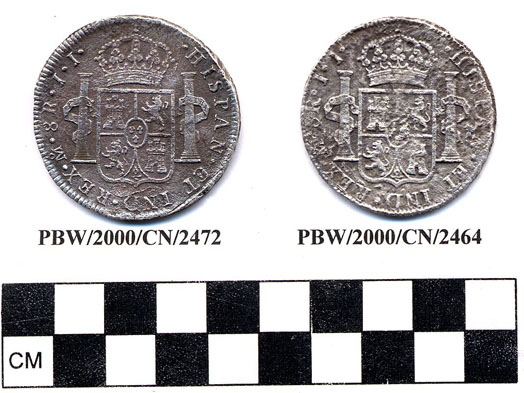
The research stated:
Leaving Le Havre’s harbour on the 8th of February, 1829, this one deck and 156 -ton beautiful brig, built in Boulogne in 1824, was sailing towards the West Indies commanded by Captain Jean-Louis Favre. The "Casimir" was charged with “wine, linen, silk, perfume, diverse pieces of porcelain” for an amount of F.161,653.00 Francs of this time. The freight had to be delivered at Port-au-Prince, the young Haitian Republic’s capital.
The cross-questioning of the nine members of the crew and of the five passengers directed by Jean-Baptiste Balardelle, secretary in charge of the administration (management) of the French Consulate in Cap-Haïtien, has revealed to us the last days of the Casimir.
Coming from Europe, the Casimir landed first the Danish Island of Saint Thomas (nowadays one of the Virgin Islands, USA) that it left on Thursday, April 23 in the morning for Haiti. On Saturday 25, the Santo Domingo Island is in sight. Captain Favre “fait donner presque toute la voile” and decides to sail along the northern coast "close enough to have a view of Porto-Plata’s houses" following the testimony of the crew and the passengers. The cross checking of these testimonies with the position of the wreck in comparison with the coast let us think that the brig was probably sailing too close from the coast. Nevertheless, Captain Favre, 43-years-old at the time, had already done this trip on the same ship the year before and he knew the dangers of these waters (reefs, sandbanks, currents...). The Casimir does 4 to 5 knots and heads for West to skirt round the North-West spit of Haiti and cuts across, South-South-West towards Port-au-Prince. On April 27 at the end of the afternoon "the sky began to turn dark; we even noticed a waterspout”.
At 7 p.m., the wind became fresher, “on serra les cacatois et le petit perroquet”, the ship doing 7 knots. At 10 p.m.: dark weather but without thunderstorm, very favourable to turn into the wind and head for; some rain". Around 10 p.m., the “matelot novice” Henri Ragonde is at the bow with the “maître d'équipage” Guillaume Buret keeping the watch. But Captain Favre discharged them although Guillaume Buret worried about the situation. And around 11:00 p.m., the inescapable occurred.
The “matelot novice” Henri Ragonde has kept the watch at the helm at 11 p.m. when the Casimir touched a reef for the first time: "With the chock, the rudder has broken. Captain Favre commanded to luff but it was impossible without rudder". Then, the anchors were deployed but failed to hold and the lines parted. One of the masts was then cut to lighten the ship. Then the ship smashed bow on to the reef in a small cove before being pushed along the reef where two further impacts breached the port side. The ship impacted two further times which resulted in the ship’s keel being broken and the ship sunk. Everyone hang (sic) on the ropes floating still attached to the sunken ship to protect themselves against the waves pounding against the reef which were sweeping over the ship and they stayed there until the morning”
On the 28th, when the day came, everyone escaped to land like they could on the fragments of the vessel which was smashed in pieces. When the survivors reached the beach near the river they found a seven pound silver cross weighing 2.326kg which the Captain cut into equal portions so that all should have some money as all of their possessions were lost on the ship. We know from the inquiry that the crew and passengers were rescued from the shore by a passing Haitian fishing boat, which took them to Monte Cristi. The Journal du Havre 4th August 1829 and Journal du Havre 25th May 1829, also give further information. The 4th of July issue states that only 30 wine barrels and other goods of little importance were saved, as they washed ashore.
They managed to get to Monte Cristi where upon hearing their story the French Prefect arrested them all and through them into jail until he could find about the loss of the silver coins on board.
The issue of the silver coins was confirmed by the inquiry.
Whilst the ship was in St Thomas, Toussaint August Leclerc and Jacques Georges Sper, the 1st Lieutenant carried a small barrel on board. This was very heavy and was placed according to Mr Joubert, close to or to the right of the door inside the Captain’s cabin. This fact was confirmed by all who were questioned at the inquiry, as it appeared this was a very important question, with as much importance as who was responsible for the sinking. The latest research confirms that the coins belonged to Admiral Boudain and from letters found written by him to his agent in St. Thomas were to be used to purchase tobacco which was to be returned to France. Henri Ragonde mentioned that he had seen a “box full of doubloons” in the Captain’s quarters.
This was not mentioned by anybody else, (and so far no gold coins have been found).
During the enquiry the Captain was not present due to ill health and his wounds sustained in the sinking. He subsequently disappeared without giving evidence. When everybody was asked who was in their opinion responsible for the sinking, all blamed the Captain. This would be normal, as the Captain was responsible for his ship, but the inquiry brought out additional reasons why he should be blamed which help to understand why the wrecking took place.
The first point is why was the Captain sailing so close to shore. He had a heated discussion with Mr Joubert, who thought the ship was sailing too close to shore. The Captain opened the chart and showed where he knew the ship was sailing. He knew that if the ship went out of sight of the shore they could miss Le Grange (El. Morro in Monte Cristi) and Cape Haïtien.
However this does not make any sense as the coast runs east to west for another 200 miles. The second point is that he dismissed the bow watch.
Henri Ragonde was by the cathead with the Bosun from 9pm till 10pm watching for the breakers or any reefs. The Captain dismissed them saying it was useless to watch out, yet that would have been the best course of action in a reef infested location. The third point being that the Captain was in his hammock having left the Henri Ragonde, the Novice on the helm. In effect the Captain was awoken by the first impact. In such a hazardous region would a responsible Captain order the most inexperienced member of the crew at night, with no watches in an area unknown to him with 100 miles of reefs, take the helm?
The inquiry goes into detail over a number of weeks that the crew and passengers were detained. The archives also give a possible reason for this, being that, the ship, was owned by Admiral Charles Baudin. Research states that:
We know now that the “Casimir” was the property of Baudin, Etesse and Cie’s ship-owners. Admiral Charles Baudin is almost forgotten nowadays, even so he was a great French sailor and one of the last people remaining faithful to Napoleon the 1st in Isle of Aix. In June 1815, he tried to organize the Emperor’s escape to the United-States but Napoleon hesitated and leaved to a far island.
Born in 1784, Charles Baudin had an uncommon career. He participated as a young novice to the expedition (1800-1803) to the Austral Lands on board of the “Geograph” and the “Naturalist”. Wounded in 1808 during a naval action, Charles Baudin will be put in non-activity under the “Restoration” because of his Bonapartist friendship. He becomes a master mariner in 1816 and creates, in 1825, a house of commerce in Le Havre. He came back to work after the Revolution of 1830, and won fame once again during the storming of San Juan d’Ulua’s Mexican fortress in 1838. He died in 1854, admiral, life senator and covered with honours.
The Admiral lost his arm when he was in command of the French Brig Renard when he engaged the English Brig HMS Swallow in 1812. A copy of a painting of the engagement is displayed in the Musée National de la Marine in Paris together with the Admiral. During the first world war the French Navy named a battleship after him.



Analysis of the ship and her construction supported the hypothesis from the archaeological evidence that the ship was badly made. An official publication found in Paris confirms the fact that the ship builder was building badly constructed craft.
Out of 5 ships built and sent to Gibraltar from Le Havre, only one arrived. The publication and inquiry were conducted by Louis Sauvage for his patron His Highness the Lord Duke of Orleans. This was published as a broadsheet in Paris 24 August 1830. A copy of the front page showing a drawing of what the Le Casimir class of ships looked like, is shown below. This article condemns the design, the lack of keel strength and the narrowness of the garboard strakes, amongst many other points. It is very satisfying for the Team to discover these problems with the construction, the first people to see them since the shipwright built the vessel and even more satisfying for our hypothesis to be proven right by the archives.
One important piece of information was the origins of the "DR" on the lead crystal bottles and the base of the blue and white ointment pots. Research has confirmed that the DR is for the manufacturer of the perfume (in the days before the perfume houses) and he was call Robert Demrnde (the French at this time often put the last name first).
The story of Le Casimir has now been published in France and has appeared in Pour La Science, Archéologia No:441 Feb 2007, L’Antibuée and another large article was published in La Neptunia national publication of the Musée National De La Marine in Paris during 2008 and 2009 No:252 & 253.
The front page of the investigation by Louis Sauvage, outlining the defects of the construction of the Le Casimir classships. The sketch shows what Le Casimir looked like while being built
Google Earth image of the reef where Le Casimir was wrecked to the east of Monte Cristi
ADMAT's maritime archaeological work on this wreck site was assisted by ADMAT-FRANCE a non profit organisation based in the Institut de Paléontologie Humaine, Muséum National d’Histoire Naturelle, Paris.
ADMAT-FRANCE is a sub division of the Anglo ~ Danish Maritime Archaeological Team
ADMAT is delighted to have an association with Muséum Nationald’Histoire Naturelle at Paris, départememt Préhistoire, UMR-CNRS 7194.


